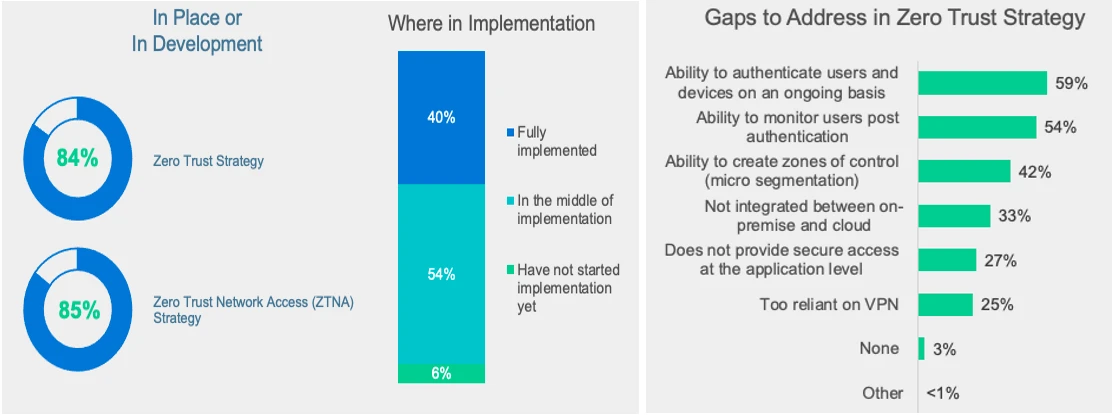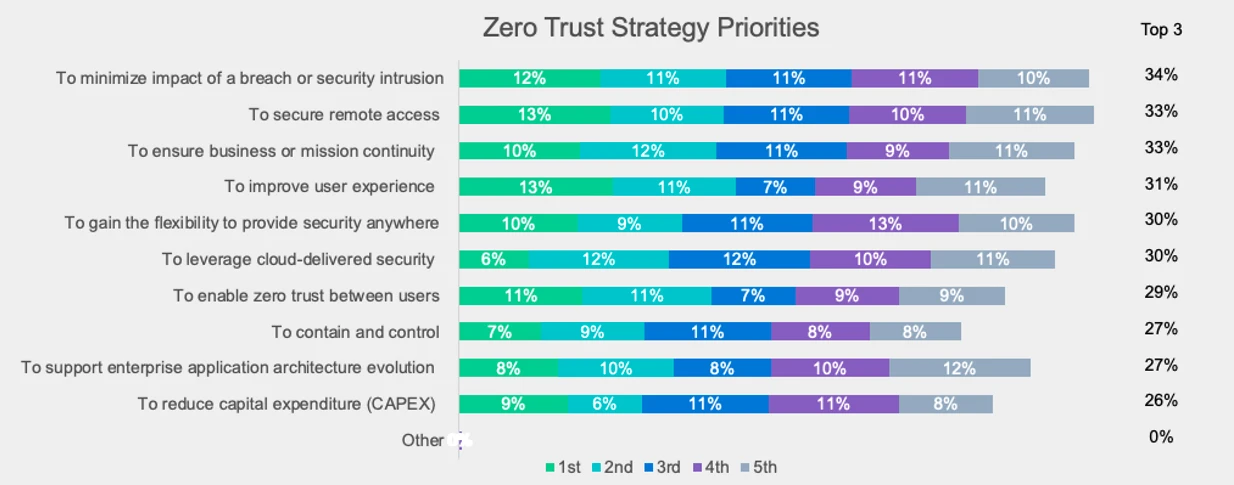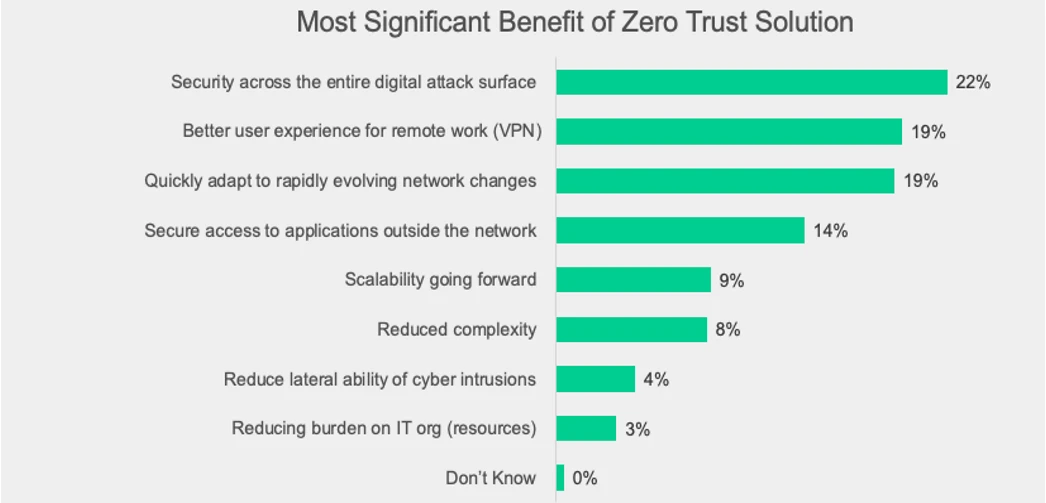 Fortinet, a global leader in broad, integrated and automated cybersecurity solutions, has unveiled the Global State of Zero Trust Report. The Fortinet survey reveals that while most organisations have a vision of Zero Trust or are in the process of implementing Zero-Trust initiatives, more than half of organisations cannot translate this vision into the solutions they are implementing because they lack some basic core fundamentals of Zero Trust.
Fortinet, a global leader in broad, integrated and automated cybersecurity solutions, has unveiled the Global State of Zero Trust Report. The Fortinet survey reveals that while most organisations have a vision of Zero Trust or are in the process of implementing Zero-Trust initiatives, more than half of organisations cannot translate this vision into the solutions they are implementing because they lack some basic core fundamentals of Zero Trust.
For a detailed view of the findings and some important takeaways read the blog. Highlights of the report follow…
A FortiGuard Labs Threat Landscape Report demonstrated an increase in the volume and sophistication of attacks targeting individuals, organisations and, increasingly, critical infrastructure. Organisations are looking for solutions to protect against these evolving threats and Zero Trust is top of mind – albeit for multiple reasons. Additionally, the shift to work-from-anywhere has put a spotlight on Zero-Trust network access (ZTNA) in particular, as organisations need to protect important assets from workers connecting from poorly protected home networks.
Confusion over defining Zero-Trust strategies
The report illustrates some confusion about what comprises a complete Zero-Trust strategy. Respondents indicated they understand Zero Trust (77%) and ZTNA (75%) concepts and over 80% reported already having a Zero-Trust and/or ZTNA strategy in place or development. Yet over 50% indicated being unable to implement core Zero-Trust capabilities. Nearly 60% indicated they do not have the ability to authenticate users and devices on an ongoing basis and 54% struggle to monitor users post-authentication.
This gap is concerning because these functions are critical tenets of Zero Trust and it brings into question what the actual reality of these implementations is across organisations. Adding to the confusion are the terms “Zero Trust access” and “Zero Trust network access”, which are used sometimes interchangeably.

Zero Trust is top of mind and priorities are varied
Priorities for Zero Trust are “minimising the impact of breaches and intrusions”, followed closely by “securing remote access” and “ensuring business or mission continuity”. “Improving user experiences” and “gaining flexibility to provide security anywhere” were also top priorities.

“Security across the entire digital attack surface” was the single most important benefit cited by respondents, followed by a “better user experience for remote work (VPN)”.

A vast majority of the survey respondents believe that it is vital for Zero-Trust security solutions to be integrated with their existing infrastructure, work across cloud and on-premises environments, and be secure at the application layer. However, more than 80% of respondents indicated that it is challenging to implement a Zero-Trust strategy across an extended network. For organisations without a strategy in place or development, obstacles included a lack of skilled resources with 35% of organisations using other IT strategies to address Zero Trust.
About the Zero-Trust report
The report is based on a global survey of IT decision makers aimed at better understanding how far along organisations are in their Zero-Trust journeys. The survey is intended to better understand the following:
- How well Zero Trust and ZTNA are understood.
- The perceived benefits and challenges in implementing a Zero-Trust strategy.
- Adoption of and the elements included in a Zero-Trust strategy.
The survey was conducted in September 2021 with 472 IT and security leaders from 24 countries, representing nearly all industries, including the public sector.
Additional resources
- Read the blog for valuable takeaways from this survey or to access the full report.
- Learn about how to better secure access for remote users to applications anywhere with Fortinet Zero Trust Network Access.
- Learn more about how the Zero Trust Education Pathway including certifications from the Fortinet NSE Institute can help you navigate the knowledge, skills and abilities needed to grow your career in Zero-Trust access.
- Watch how Fortinet makes possible a digital world you can always trust, and view how the Fortinet Security Fabric platform delivers broad, integrated, and automated protection across an organisation’s entire digital infrastructure.
- Read more about how Fortinet customers are securing their organisations.
- Engage in the Fortinet User Community (Fuse). Share ideas and feedback, learn more about our products and technology, and connect with peers.
- Follow Fortinet on Twitter, LinkedIn, Facebook and Instagram. Subscribe to Fortinet on YouTube.
About Fortinet
Fortinet (Nasdaq: FTNT) makes possible a digital world that we can always trust through its mission to protect people, devices and data everywhere. This is why the world’s largest enterprises, service providers and government organisations choose Fortinet to securely accelerate their digital journey. The Fortinet Security Fabric platform delivers broad, integrated and automated protections across the entire digital attack surface, securing critical devices, data, applications and connections from the data centre to the cloud to the home office. Ranking number one in the most security appliances shipped worldwide, more than 550 000 customers trust Fortinet to protect their businesses. And the Fortinet NSE Training Institute, an initiative of Fortinet’s Training Advancement Agenda (TAA), provides one of the largest and broadest training programmes in the industry to make cyber training and new career opportunities available to everyone. Learn more at www.fortinet.com, the Fortinet Blog or FortiGuard Labs.
- This promoted content was paid for by the party concerned




